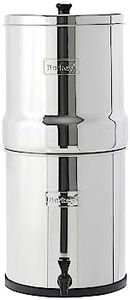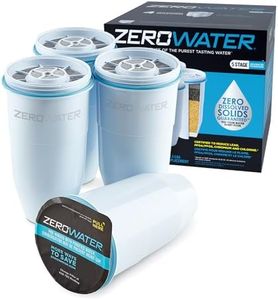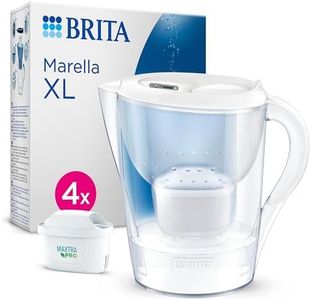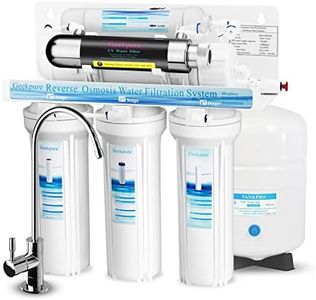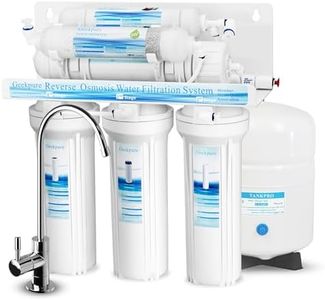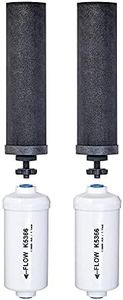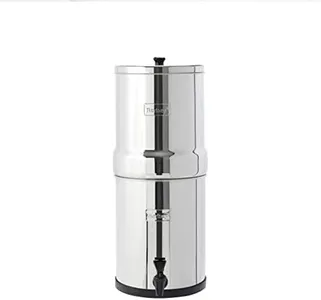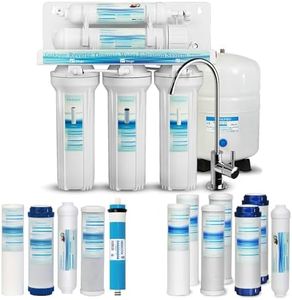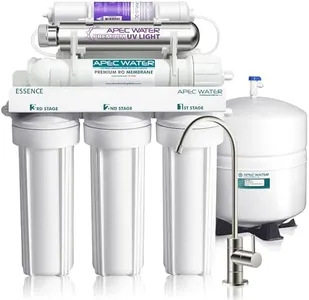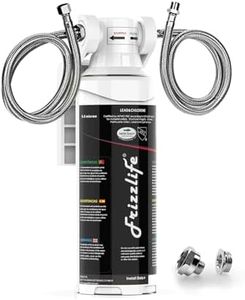We Use CookiesWe use cookies to enhance the security, performance,
functionality and for analytical and promotional activities. By continuing to browse this site you
are agreeing to our privacy policy
10 Best Drinking Water Filters
From leading brands and best sellers available on the web.Buying Guide for the Best Drinking Water Filters
Choosing the right drinking water filter can seem overwhelming given the many options available, but focusing on what you expect from the filter and the qualities of your water source will make the process much simpler. Consider what contaminants you want to remove, how much filtered water you need, and how convenient you want the filtration process to be. Understanding the key specifications will make it easier to narrow down your best options.Filtration TechnologyFiltration technology refers to the method a water filter uses to remove contaminants. The most common types include activated carbon (removes chlorine, some pesticides, and odors), reverse osmosis (removes a wide range of contaminants including heavy metals and dissolved solids), and UV filtration (kills bacteria and viruses). Some filters combine methods for broader protection. You should consider what is present in your water supply— for example, if you’re mainly concerned about taste and chlorine, carbon might suffice, but for well water or uncertain sources, multi-stage or reverse osmosis systems may be better. Picking the right technology is about matching the filter’s strength to the issues you want to address.
Contaminant Removal CapabilityThis specification tells you what types and amounts of contaminants a filter can reduce or remove, such as lead, chlorine, sediment, or microbes. Filters are certified for certain contaminants (often listed by NSF/ANSI standards). Some remove only basic impurities, while others target a broader range. Think about whether you need basic taste improvement or protection from specific health risks, and check the filter's claims and certifications to be sure it matches your needs.
Filter Capacity and LifespanFilter capacity describes how many gallons or liters the filter can process before it needs to be replaced, and lifespan refers to how long the filter lasts (for example, in months). Smaller pitchers might have filters lasting a few months or several hundred liters, while under-sink or whole-house systems can filter thousands of liters over half a year or longer. If you use a lot of water daily or have a large household, higher capacity and longer lifespan means less frequent maintenance, while lower capacity models may be enough for individuals or occasional use.
Flow RateFlow rate measures how quickly filtered water is dispensed, often in liters or gallons per minute. High flow rates mean water is available faster, which is helpful for families or large volumes, while lower rates might be fine for pitchers or single-person use. Consider whether you want instant access or don’t mind waiting; a slower flow might come with finer filtration for better contaminant removal, so balance speed with effectiveness based on your patience and needs.
Installation and MaintenanceThis refers to how easy the filter is to set up and take care of. Some models, like pitchers or faucet attachments, require almost no installation, while under-sink or whole-house units can be more complex. Maintenance includes changing the filter cartridges regularly. If you prefer low-hassle options, look for filters that are quick to set up and have simple replacement procedures. If you're comfortable with more effort, more complex systems often provide higher capacity and performance.
Filter Size and Form FactorThis spec covers the physical size and where the filter is used—such as countertop pitchers, faucet attachments, under-sink units, or whole-house systems. Smaller filters are portable and suited for renters or small kitchens, while bigger systems are more permanent and suited for larger households. Picking the right size depends on your available space, lifestyle, and how much filtered water you’ll need on a regular basis.
